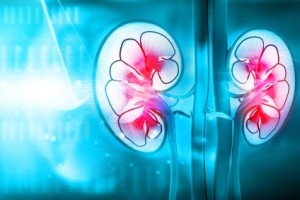 Autosomal dominant polycystic kidney disease (ADPKD) is an inherited condition caused by a genetic fault that disrupts normal development of the kidneys. The main function of the kidneys is to filter out waste products from the blood and release them from the body as urine, ADPKD compromises this process. The final stage of the disease is characterized by abdominal pain, high blood pressure, presence of blood in the urine, urinary tract infections, and ultimately kidney failure.
Autosomal dominant polycystic kidney disease (ADPKD) is an inherited condition caused by a genetic fault that disrupts normal development of the kidneys. The main function of the kidneys is to filter out waste products from the blood and release them from the body as urine, ADPKD compromises this process. The final stage of the disease is characterized by abdominal pain, high blood pressure, presence of blood in the urine, urinary tract infections, and ultimately kidney failure.
ADPKD causes ongoing cyst growth that leads to progressive kidney enlargement. Despite this, measurements of kidney function remain within the normal range and stable for decades, irreversible decline only occurs in the late stages of the disease. Therefore, conventional kidney function measures cannot adequately assess disease progression in ADPKD, especially at early stages of the disease.
Total kidney volume (TKV) can be used as a suitable image biomarker to determine the degree of ADPKD progression. However, manual segmentation of the kidney is a challenging task, due to many factors including the irregular shape of the kidneys, the highly variable contrast at the interface of different tissue types, and motion artifacts caused by respiration during image acquisition.
In order to overcome these problems, scientists from Mayo Clinic developed an automated method for kidney segmentation and TKV measurement. Patient’s baseline and follow-up T1 weighted MRI scans were registered, using Analyze software, to find the best overlap between the two image volumes. After registration, the software was used to determine kidney volume via stereological point counting.
The group’s automatic image processing approach offers a rapid and accurate method to measure TKV that allows for robust study repeatability while removing user bias. Furthermore, the protocol has useful clinical applications as it can be applied to evaluate the effectiveness of therapeutic interventions by determining changes in kidney volume.
Tags: Kidney Disease AnalyzeDirect
AnalyzeDirect